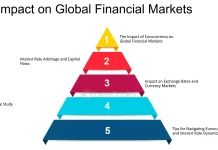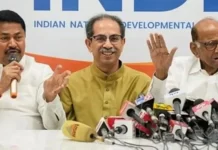Systematic unemployment and the Union Budget 2024
The Periodic Labour Force Survey indicates that between 2017 and 2018, the unemployment rate was 6.1%; however, by 2022–2023, it had dropped to 3.2%. However, what is the government’s approach to addressing structural unemployment?
Assessing employment and joblessness
Economists categorize people into two groups: those who are employed and those who are not. People in the working age range, around 15 to 60 (working age varies by country), are included in the labor force segment. Children and the elderly and retired make up the non-labor force. The population is separated into employed and unemployed groups within the labor force. People who are willing to work but cannot find any possibilities are considered unemployed, while those who have work prospects are considered employed.
Two key economic indicators are used by economists to analyze labor markets. The ratio of the labor force to the adult population is known as the labor force participation rate, and it comes first. The percentage of the labor force that is unemployed is known as the unemployment rate, and it comes in second. Although it is ideal to measure labor trends across the board, doing so is quite expensive and time-consuming. Therefore, to assess the developments in labor markets, economists conduct surveys with the assistance of statisticians.
Since 1972, the National Sample Survey Organization in India has conducted surveys on employment and unemployment quinquennially, or once every five years. We obtained information from these polls about the job and unemployment situations in India. But in order to solve unemployment, there was a need for more frequent surveys and prompt government action. These surveys had a significant time lag.
₹1000 Cr Venture Fund for Space Economy Boost
Youth unemployment: A serious issue
Therefore, starting in 2017–18, the Periodic Labour Force Survey (PLFS), a quarterly and yearly employment survey, was released by the Ministry of Statistics and Programme Implementation (MOSPI). Since then, the PLFS has emerged as the primary tool for tracking and analyzing trends in India’s labor markets.
“The unemployment rate among the youth was much higher compared to that in the overall population,” according to the PLFS 2017–18. While the young unemployment rate (those between the ages of 15 and 29) was 18%, the overall unemployment rate was 6%. The PLFS 2022–2023 reports that while the unemployment rate has decreased, there is still a significant gap between youth unemployment and the overall labor force. In 2022–2023, the youth unemployment rate is 10% while the general unemployment rate is 3.2%.
Regarding rural-urban differences, the youth unemployment rate in rural areas is 8%, whereas the urban rate is almost twice as high at 15.7%. Separate unemployment data is released by the independent research organization, Centre for Monitoring Indian Economy (CMIE). In 2022–2023, the CMIE reports that the youth unemployment rate was 45.4%.
According to the gender-specific unemployment rate, the youth unemployment rate for men is 9.7%, while for women it is 10%. The percentage of female labor force participation rose from 17% in 2017–18 to 27.8% in 2022–2023. For men, the rate of labor force participation was 55.5% in 2017–18 and rose slightly to 56.2% in 2022–2023. An further significant issue facing the Indian economy is the lower percentage of women in the labor force.
Unemployment that is both structural and frictional
According to economic studies, there are two types of unemployment. The first type of unemployment is frictional unemployment, which happens when workers take their time looking for jobs that best fit their preferences and skill set. The second type of unemployment is structural unemployment, which occurs when job demand outpaces supply. However, because the economy is always changing, killing old opportunities and creating new ones, frictional unemployment is unavoidable. Economists are therefore not very concerned about frictional unemployment.
Comparing the proportions of various sectors in employment and economic activity, or GDP, might help identify the existence of structural unemployment (Table 1). It is evident that while agriculture accounts for 15% of GDP, it employs 46% of the workforce. The situation is reversed in the other two sectors, namely industry and services, where employment is lower but GDP is larger.
Analyzing patterns in male-female classification reveals the persistent issue of women finding work mostly in the agricultural sector, which has slower growth. Most men work in the rapidly expanding services industry. It also helps to partially explain why women are paid less than men.
Addressing the issue of structural unemployment
Agriculture’s proportion of economic activity has decreased from 60% in 1951 to 15% in the present. However, there isn’t a comparable drop in employment in the agricultural sector. The fact that employment is not growing at a comparable rate to the industries producing greater growth highlights India’s structural unemployment issue.
Because there aren’t enough jobs in other industries, the agricultural industry likewise has disguised unemployment, which results in a labor force that is overworked. Workers are often compelled to look for job in unofficial sectors due to a lack of chances in the legitimate sector. This exacerbates and complicates the job issue even more because there is no worker protection and lower salaries in the unorganized sector.
It is necessary to address structural unemployment from both the supply and demand sides. While it is necessary to increase the supply of employment in growth sectors, it is also necessary to address demand factors by enhancing laborers’ skill sets and levels of education to enable them to work in higher growth industries.
Unemployment that is structural and the budget
The Finance Minister stated in the Union Budget 2024 that the government will focus on nine areas of economic development. “Employment & Skilling” was one of the nine priorities. The Finance Minister unveiled three programs under the heading “employment and skilling” to address employment-related issues:The three programmes are designed to provide incentives for firms and new hires to generate jobs in the formal economy. Another reason to encourage employment is that the manufacturing sector, which is far more skill-based than the services sector, is better adapted to absorb excess jobs from the farm sector.
The Budget has also suggested new initiatives to upskill the labor force. a program that has been started to modernize 1,000 Industrial Training Institutes, which will train 20 lakh kids in five years. The course design and content will be in line with industry demands, equipping the young people to succeed in the workforce while they are in school. In order to help students improve, the government has also suggested that it will enable talent loans up to Rs 7.5 lakh.
Await the execution.
India has long been plagued by systemic issues related to unemployment. Although they haven’t always been successful, governments have attempted a number of different programs in the past to lower unemployment. Though it has remained a pipe dream, politicians have also attempted to encourage and incentivize manufacturing.
We will have to wait and observe how the new policies that the present administration has introduced are put into practice. As with all government programs, even the most recent ones on employment, the proof of the pudding is in the eating. One positive development following the Lok Sabha election is that unemployment has grown to be a significant concern. The only option left to the federal and state governments is to take action to defuse the ticking time bomb.


































